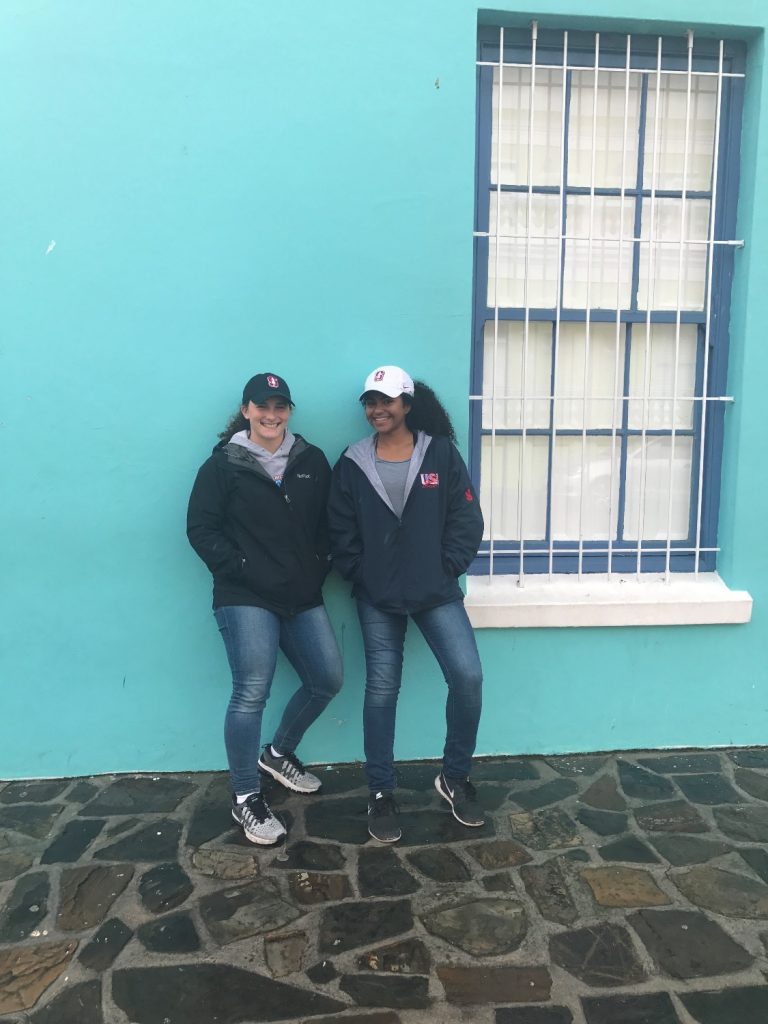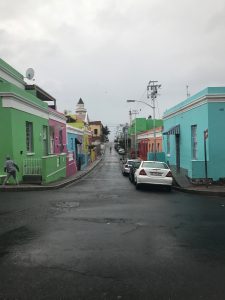
The rainbow of houses stands out in Cape Town’s grey cityscape. Up a steep side street, bold hues of pink, green, blue, and yellow pop against the dreary backdrop of an overcast sky, and I couldn’t help but smile. The array of colors and the cute, quaint box houses look like something out of a children’s book. It just looks so pretty and so happy.
However, we soon learned that this neighborhood was far more than just a pretty picture and has a complicated history. Looking town the hill at the end of the street, you can spot a small building. This building is where thousands of Malay slaves were housed centuries ago. After the abolition of slavery in South Africa, the slaves were able to leave those quarters and began renting and acquiring property up the hill in the colorful Bo-Kaap. The area is very symbolic for the Cape Malay peoples as moving up the hill into this neighborhood symbolized the acquisition of their freedom and advancement of their community, and they could always look down the hill towards that small building, which serves as a reminder of the area’s history.
“Our diverse group fit in so well with our eclectic surroundings, and I couldn’t help but think how amazing it was that all these people from a variety of backgrounds were here together experiencing this area and learning the story behind it.”
So there I stood, among these beautiful homes. I watched my fellow ACE members playing soccer with local children and enjoying the city. Our diverse group fit in so well with our eclectic surroundings, and I couldn’t help but think how amazing it was that all these people from a variety of backgrounds were here together experiencing this area and learning the story behind it.




